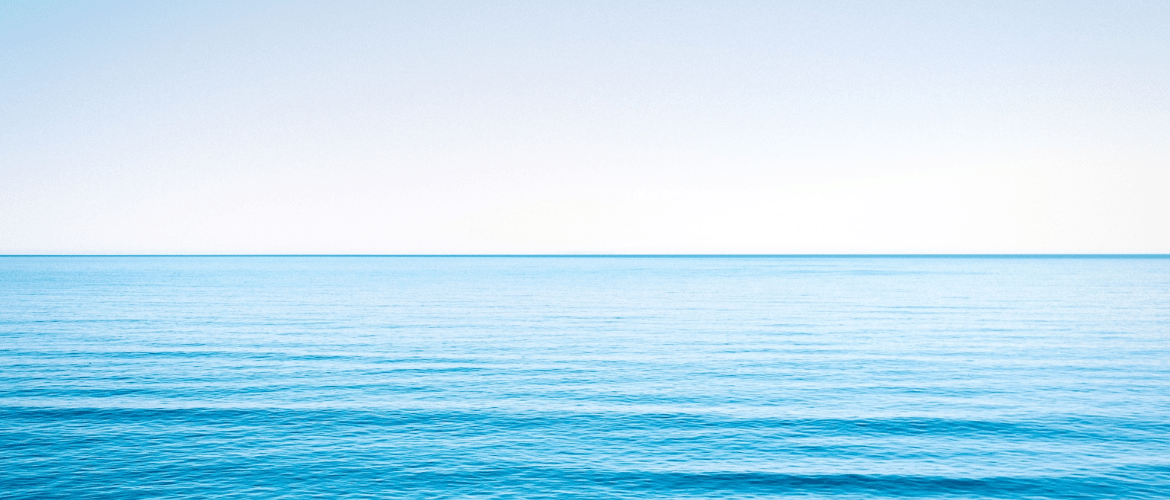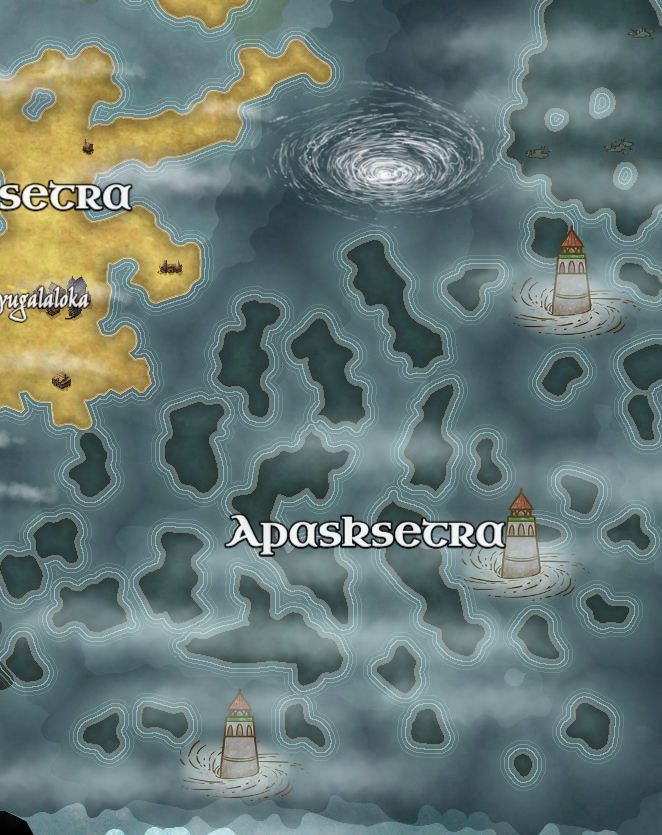Apasajiva
Souls of Water
The Apasajiva, or Apas, are one of five ethnicities among the Prani of Maya. Like all Prani, they are Jiva, and like all Prani they follow the four-tier caste system that divides their society.
Apas mainly live in Apasksetra, though some reside in Indriya-mandal, the capital city of Maya.
Apasksetra borders every country in Maya -- Visesaksetra, Vayuksetra, Agniksetra, and Dyausdesa -- because is boundaries stretch over a lot of water. It's half-ocean, half-wetlands, and its ocean borders bump up against the borders of all the other countries.
History
The history of the Apas is no less bloody than the history of any other elemental on Maya. For millennia the five factions warred against each other, until finally coming to a lasting peace almost two centuries ago. Once the peace was brokered, the Apas became very secretive and withdrawn. They rarely left their ocean homes, keeping to themselves and only marrying within their ethnicity. Only members of the lowest caste would go abroad, often times to search for similarly ranked Prani who might be a suitable mate. This continued for just over a century, at which point the plague hit. No one knows when it hit the Apas, but when it left them it had reduced their female population to one-tenth its prior size, according to some numbers given, and the male population had been halved. The truth will never be known for the Apas have not become any more forthcoming about themselves in the past decades. When the Arranged Mating Protocols went into place, Apas were the most resistant to it and avoided joining it the longest. Eventually, after seeing the havoc that was wrought without any sort of protocol in place for marriage and childbearing, they acceded in order to protect not just civility but their very existence.Powers
It's worth noting the Prani do not consider these things "powers" but just part of being Jiva. Any Terrans who encounter the Prani, however, class all these abilities as being special, magical powers, so it is the term we will use. Apasajiva, being connected to the element of water, have water-based abilities and appearance. It's all very dependent on what caste a particular Apas is; however water has some specific associations on Maya. Water Associations- blood, lymph, other fluids of the body
- taste and speech
- removing of obstacles
- anything to do with oceans, rivers, rain, or any water-dwelling creatures
- weather prognostication (more rarely -- ability to alter the weather)
- water-breathing, though most do not live within the water full-time
- minor ability to influence blood clotting in another person
- minor healing capacity regarding fluid-based issues
- increased time before suffering from dehydration
- hypertasting on a molecular level
- conversion to a liquid state and, relatedly, fast-travel using the water cycle
- language mastery
- weather control
- shapeshifting, though to what extent is unknown
- some form of telepathy, though again the details are unknown
- distance viewing (it's speculated that only those in the towers can use this, and only because of the towers themselves)
Naming Traditions
Feminine names
Yashodevi, Mukta, Vidya, Sarala
Masculine names
Sashi, Inderpal, Madhu, Kishore
Unisex names
Many Apas names are easily used for one sex or the other, often with a tweak in spelling.
Family names
Mishra,
Apati,
Patipas,
Dhuriya,
Indra,
Minakshi,
Nagendra,
Pankaja
Ideals
Beauty Ideals
Those considered the most beautiful among the Apas are those who show the characteristics of their mother element: water.
Grace and fluidity of movement are of the highest import when classing the beauty of an Apas. Those Apas who are considered the most beautiful move like the water itself, flowing and sinuous.
Patience is also very important, characterized by an Apas' ability to be still. Fidgeting and impatience are considered ugly.
While all Apas have physical characteristics that show their elemental affinity, there are some looks that are considered more beautiful than others. Those with darker blue skin and black hair are considered the most beautiful. Red eyes are also considered the most beautiful, but are vanishingly rare.
If of a higher caste, the non-human attributes considered most attractive are scales, tails, and fins.
Finally, mental attributes considered the most attractive are intelligence and an inquisitive mind. Apas are historically scholarly types and this is reflected in their beauty ideals.
Gender Ideals
The plague unbalanced so much life on Maya, but especially how the genders relate. The loss of most Prani women on the planet created an imbalance in favour of female supremacy.
To the Apas, the ideal woman exists. She doesn't have to be beautiful or even particularly smart -- she just has to exist and participate in the Arranged Mating Protocols, and men will fall over themselves to please her. Apas women are very free in what they want to do with their lives, so long as they consent to participate in the AMPs three times.
Apas men are held to a much higher standard. They are required to be well-read, well-spoken, and constantly trying to better themselves through education. They must be hard workers, ambitious, and career-minded while also being family-focused.
Like all men on Maya who wish to participate in the Arranged Mating Protocols, Apas men must receive high scores in Ramavasatha.
Courtship Ideals
Apas courtship is traditionally very long and includes methods that fit within their water affinity.
Traditional methods of courting for the Apas:
Traditional methods of courting for the Apas:
- writing of poetry
- scholarly pursuits (invitation to a lecture of interest, etc)
- lots of conversation
- gifts that showcase the patience of the giver







Comments